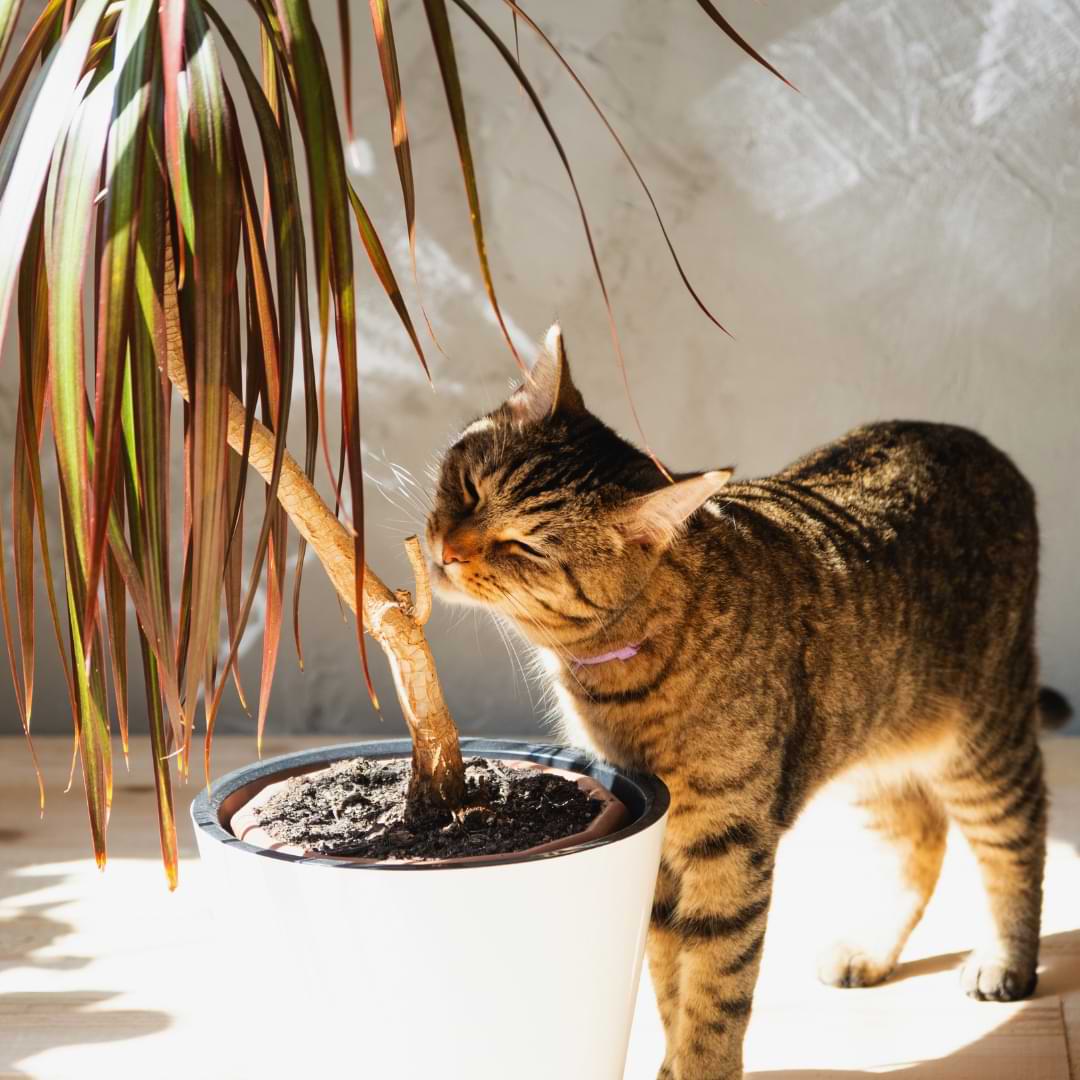Table of Contents
- Dracaena Marginata Care and Pet Safety
- Understanding the Dracaena Marginata
- Dracaena Marginata Care and Pet Safety: What You Need To Know
- Safe Practices
- Plant Care & Maintenance
- Non-toxic Alternatives to Dracaena Marginata
- FAQ: Dracaena Marginata & Pet Safety
- Grow Beautiful Plants While Keeping Your Pets Safe
- Additional Houseplant Resources
Dracaena Marginata Care and Pet Safety
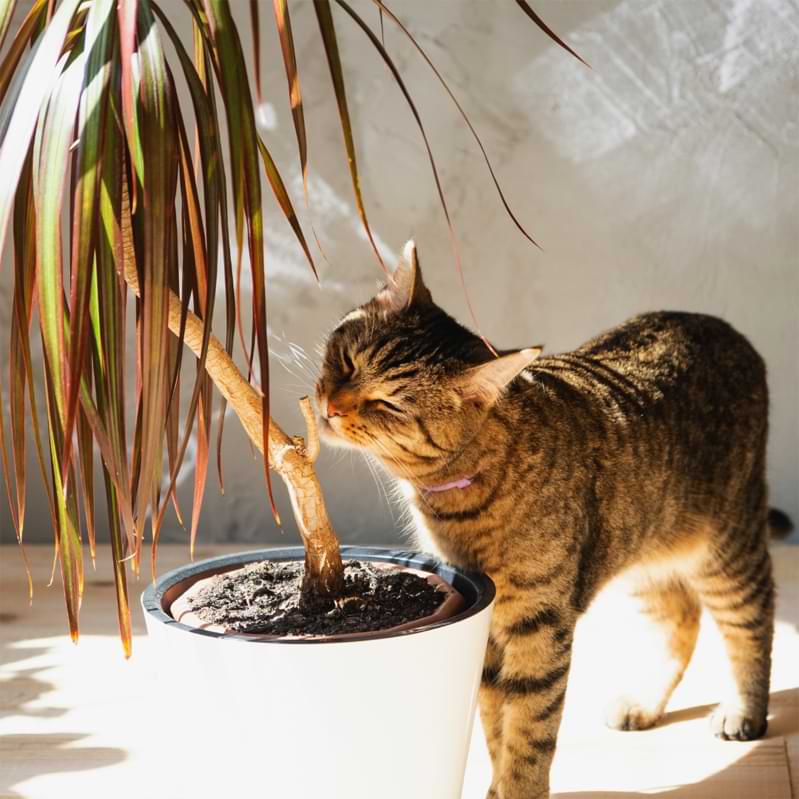
Prized for its attractive foliage and hardy nature, the Dracaena Marginata is rapidly becoming one of the most popular houseplants for experienced and beginner growers. With low light needs, sporadic watering, and minimal maintenance required, it’s the perfect addition to any home or office space.
But growing these stunning plants around pets poses a potential safety risk.
Like many houseplants, the Dracaena Marginata contains substances that can be toxic to animals when ingested. However, with the best plant care tips and a few simple precautions, you can ensure the safety of your pets while still enjoying the beauty and benefits of this stunning houseplant.
Understanding the Dracaena Marginata

What is Dracaena Marginata?
Commonly referred to as dragon tree, this plant is native to Madagascar and grows up to 15 feet tall when grown outdoors and approximately 6-8 feet when grown indoors.
The Dracaena Marginata has long, thin, dark green leaves with red or purple edges. It’s popular for its unique appearance and ability to adapt to a variety of indoor conditions.
This plant is also known for its air-purifying properties, making it an ideal choice for those looking to improve the air quality in their home or office space.
While Dracaena Marginata is the most popular species for indoor gardens, there are over 120 different types of Dracaena plants, each with their own distinct characteristics, including:
- Dracaena Goldieana (Rare) – Features striping on the leaves and a reddish-pink tint.
- Dracaena Lemon Lime (Common) – Vibrant yellow and green striped leaves.
- Dracaena Reflexa Song of India (Common) – Showcases bright yellow and green striped leaves with red edges.
- Dracaena Lisa Cane (Popular) – Long, deep green leaves that are smooth and shiny.
- Dracaena sanderiana (Rare) – Features a distinctive braided stem and narrow leaves.
- Dracaena Fragrans Massangeana (Popular) – Also known as the corn plant, it has broad, green leaves with yellow stripes.
- Dracaena Surculosa (Common) – Often known as the gold dust dracaena, characterized by its speckled yellow and green leaves.
- Dracaena Draco (Rare) – A hardy species known as the dragon’s blood tree, notable for its umbrella-shaped canopy and thick, woody trunk.
- Dracaena Deremensis’ Warneckii’ (Common) – Features long leaves with white or yellow variegation running along the edges.
- Dracaena Janet Craig (Popular) – Boasts dark green, glossy leaves and is highly sought after for its ability to thrive in low-light conditions.
- Dracaena Compacta (Rare) – A dwarf version of the Dracaena Marginata, featuring shorter leaves and a more compact appearance.
The species also includes many trees and shrubs that can live for several decades with proper care. Like their houseplant counterparts, tree, succulent, and shrub species in the Dracaena family are typically low-maintenance, easy-to-care-for plants.
Learn more about the easiest houseplants to grow for beginners!
Dracaena Marginata Care and Pet Safety: What You Need To Know
Is Dracaena Marginata Toxic To Pets?

Yes, the Dracaena Marginata is toxic to pets if ingested. But, unlike other common houseplants such as the pothos or monstera, this plant is not considered highly toxic and typically only causes mild to moderate symptoms.
The culprit behind its toxicity is a chemical compound called saponins. In plants, saponins help protect against pests and act as allelopathic agents, fostering growth, survival, and reproduction.
While safe for the plant, pets lack the cholesterol levels needed to safely break down this chemical compound, leading to thousands of cases of animal poisoning every year.
What are the Symptoms of Dracaena Marginata Poisoning in Pets?
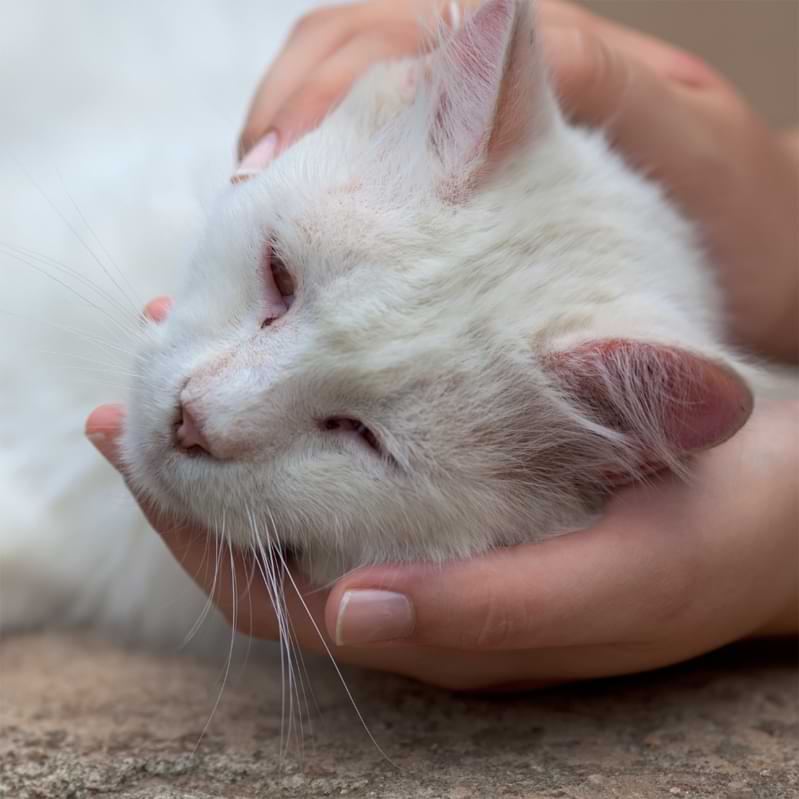
Pets are finicky creatures, and it can be challenging to know what they’ve gotten into if you haven’t seen them in the act. But, if you have found your pet exhibiting the following symptoms and you have a Dracaena Marginata in your home, it’s essential to seek veterinary attention immediately:
- Drooling
- Vomiting
- Diarrhea
- Loss of appetite
- Lethargy or weakness
- Dilated pupils (cats)
These common symptoms usually manifest within a few hours after ingestion and can last for up to 24 hours. While no specific amount is needed for toxicity, the severity of symptoms can depend on the amount ingested and the size of your pet. In severe cases, symptoms may include:
- Difficulty breathing
- Seizures
- Vomiting blood
- Discolored gums (blue or brown)
- Collapse/fainting
It’s also important to note that while cats and dogs are most at risk of poisoning from Dracaena Marginata plants, other pets such as birds, rabbits, and guinea pigs can also be affected with the same symptoms after ingestion of Dracaena Marginata leaves or stems.
What To Do If Your Pet Ingests Dracaena Marginata
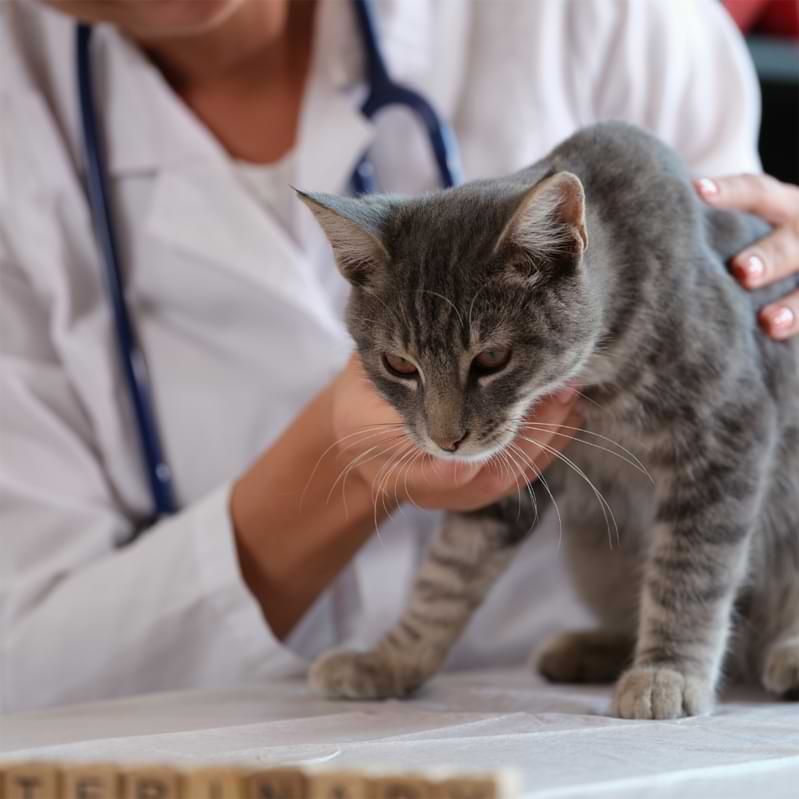
If you have a Dracaena Marginata and dogs or cats have gotten into it, here’s what you should do:
- Remove any remaining plant material from your pet’s mouth.
- Rinse their mouth with water to get rid of any saponin residue.
- Keep an eye on your pet and monitor their symptoms.
- Call or visit your veterinarian for further advice.
Depending on the severity of symptoms and how soon veterinary attention is sought, treatment may involve induced vomiting with activated charcoal or providing supportive care such as IV fluids and anti-nausea medications.
Safe Practices
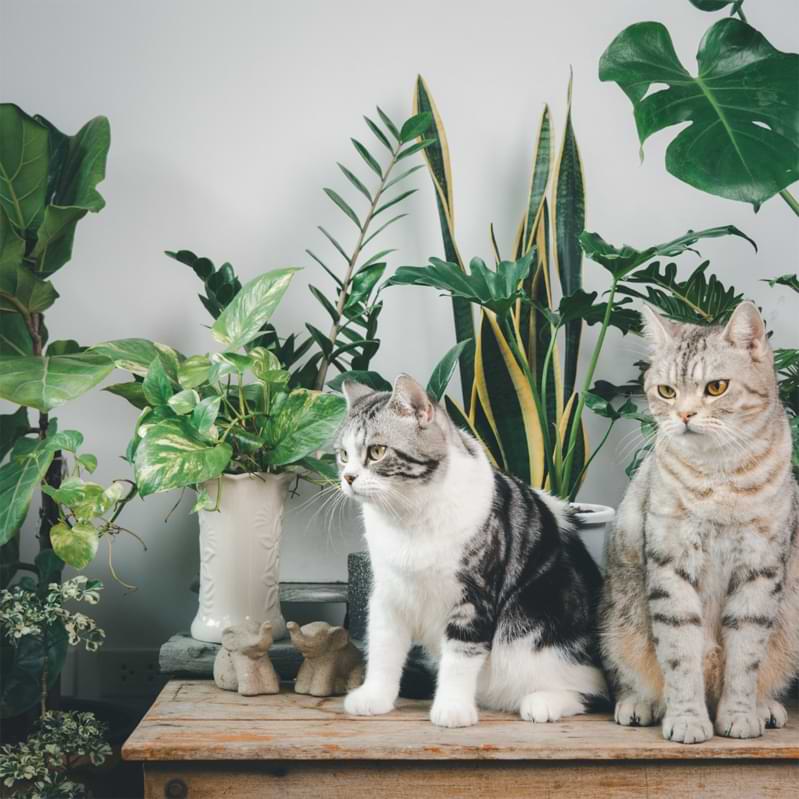
Staying Safe Around Toxic Plants for Pets
Plant Placement

Keeping your Dracaena Marginata plant out of reach from your pets is the best way to prevent accidental ingestion. Its height can make this tricky, but pet parents have found that keeping the plant in an area where pets don’t often go, like the balcony or the bathroom, is an easy solution.
Soil Barriers
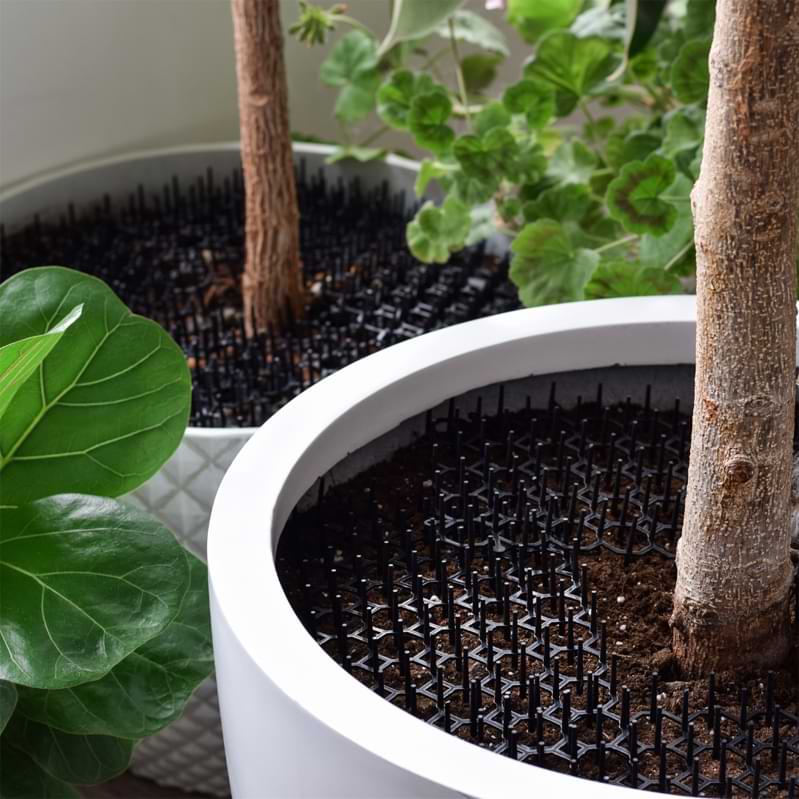
Pets hate the feeling of sticky or prickly things under their paws and around their noses. Using pinecones, seashells, or smart gravel as a top layer over the soil can discourage them from digging or getting too close to toxic plants for pets.
Training

Training your pet to avoid chewing or nibbling on houseplants is very possible. You can use a bitter spray deterrent sold in most pet stores or make one at home using white vinegar and water. Simply mix equal parts of each ingredient in a spray bottle and apply to toxic plants for pets. This will leave a distasteful flavor on the leaves that will deter pets from trying to eat them.
Provide Other Chew Toys
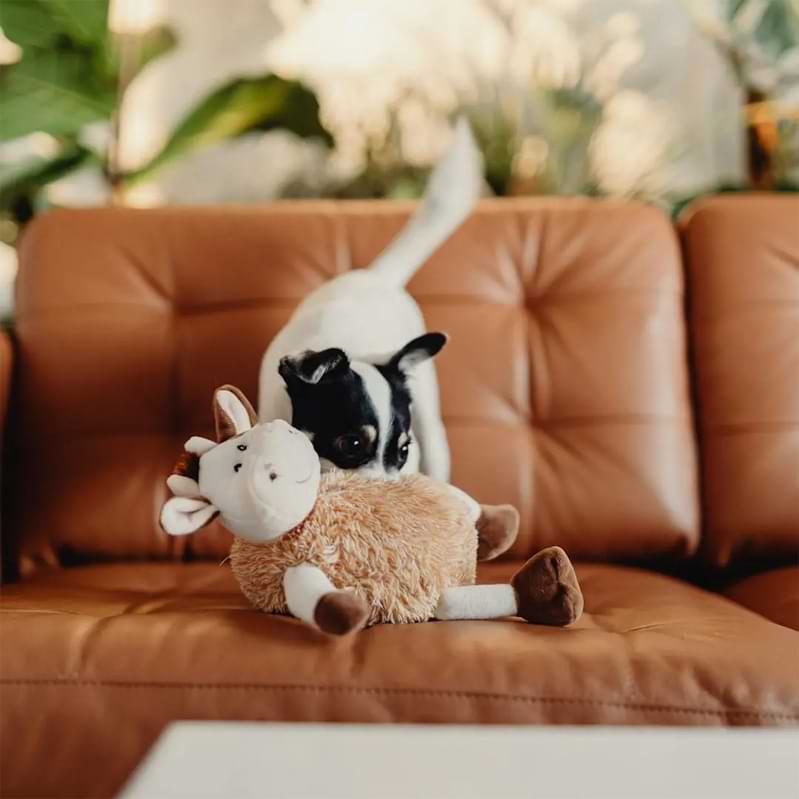
Credit: Photo by Karolina Grabowska: https://www.pexels.com/photo/a-dog-with-a-toy-on-a-sofa-5942479/
Bored, teething, or curious animals may still be drawn to chewing on toxic plants for pets. To prevent this, ensure your pet has appropriate chew toys available at all times. This will redirect their attention to safe and non-toxic items rather than potentially harmful houseplants.
Plant Care & Maintenance
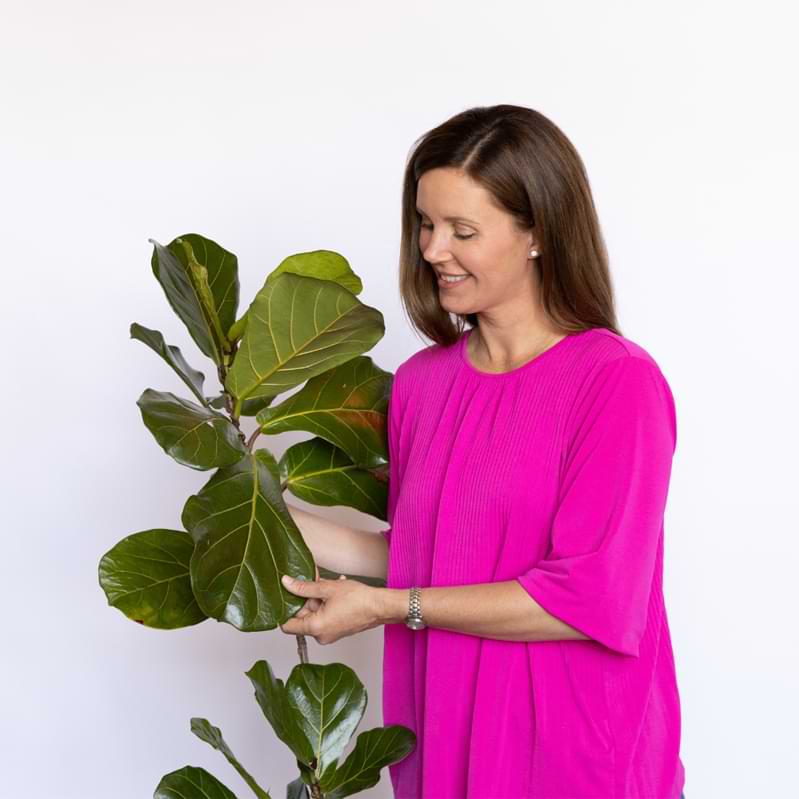
Caring For Your Dracaena Marginata
Keeping your Dracaena Marginata healthy and thriving ensures no fallen leaves or branches that may be tempting for your pet to chew on. Essential care tips for keeping the houseplant vibrant, healthy, and safe to keep around pets include:
- Water when the top inch of soil is dry. Over-watering causes root rot, while under-watering causes leaves to brown, wither, and fall off.
- Provide bright, indirect light. Too much direct sunlight can burn the leaves and make them drop or sag, providing easy access to curious pets, while too little light can affect their growth.
- Fertilize once or twice a year. Use a balanced, water-soluble plant food to keep nutrient levels at their optimum. Nutrient-deficient plants droop, making it easy for pets to grab and chew on leaves.
- Prune regularly. Removing dead or damaged leaves with sharp pruning shears and any spent flowers or berries (outdoor growers) helps keep the plant neat and tidy while reducing potential hazards for curious pets.
Most importantly, using well-draining indoor soil that keeps the plant’s roots happy and healthy will prevent growth and development issues that release more toxins and attract pets with a stronger scent of decay.
10 Tricks and Essential Products to Revolutionize Your Houseplants

You don’t have to risk pet safety to have green and gorgeous houseplants in your home.
Credit: Photo by Nothing Ahead: https://www.pexels.com/photo/a-kitten-in-a-flower-pot-15958810/
Non-toxic Alternatives to Dracaena Marginata
If the risk to your pets is too significant for you to handle, consider growing one of these pet-friendly plants at home instead instead of common toxic plants for pets:
- African Violet
- Orchid
- Christmas Cactus
- Bonsai ( Juniper or Bamboo Palm only)
- Boston Fern
- Peperomia
- Money Tree (Pachira aquatica)
- Spider Plant
Choosing pet-friendly alternatives will keep your furry pals safe and add beauty and life to your space without worrying about accidental poisoning. Remember to do thorough research before bringing any houseplants into your home, and avoid any plants with the following characteristics:
- Excessive sap flow
- High terpene content (strong odor)
- Insoluble calcium oxalate crystals (common in peace lilies and philodendrons)
- High saponin levels
- Sharp spines or thorns
If you aren’t sure whether the houseplant you want to buy is safe for pets, visit the ASPCA’s website or consult a veterinarian before purchasing.
FAQ: Dracaena Marginata & Pet Safety
1. Is Dracaena Marginata safe for cats?
No, Dracaena Marginata is not safe for cats or any pet. It contains high levels of saponins, which can cause toxicity if ingested. Symptoms aren’t usually fatal but can be uncomfortable and require veterinary care.
2. How can I stop Dracaena Marginata’s leaves from falling off?
To prevent leaves from falling, make sure to keep your plant healthy and well-nourished. Also, avoid over-watering or under-watering as this can cause leaf drop. Regular pruning of dead or damaged leaves will also help keep the plant looking neater and reduce potential hazards for curious pets.
3. What is the easiest houseplant to grow around pets?
The easiest houseplants to grow around pets are the African Violet and Spider plants. Both of these houseplants are non-toxic plants to pets and require minimal care. They also add a pop of color to any room they are placed in.
Grow Beautiful Plants While Keeping Your Pets Safe
Balancing pet safety with our love for greenery can be a challenge, but with proper placement, care, maintenance, and pet training you can grow a thriving Dracaena Marginata or other pet-friendly houseplant that adds beauty and life to your home without compromising the health and safety of your furry friends. Happy Growing!
Want more tips on keeping your pets and plants co-existing harmoniously? Sign up for the Houseplant Resource Center newsletter to receive regular plant care advice, deals on houseplant accessories, and the latest news on pet-friendly plants.

